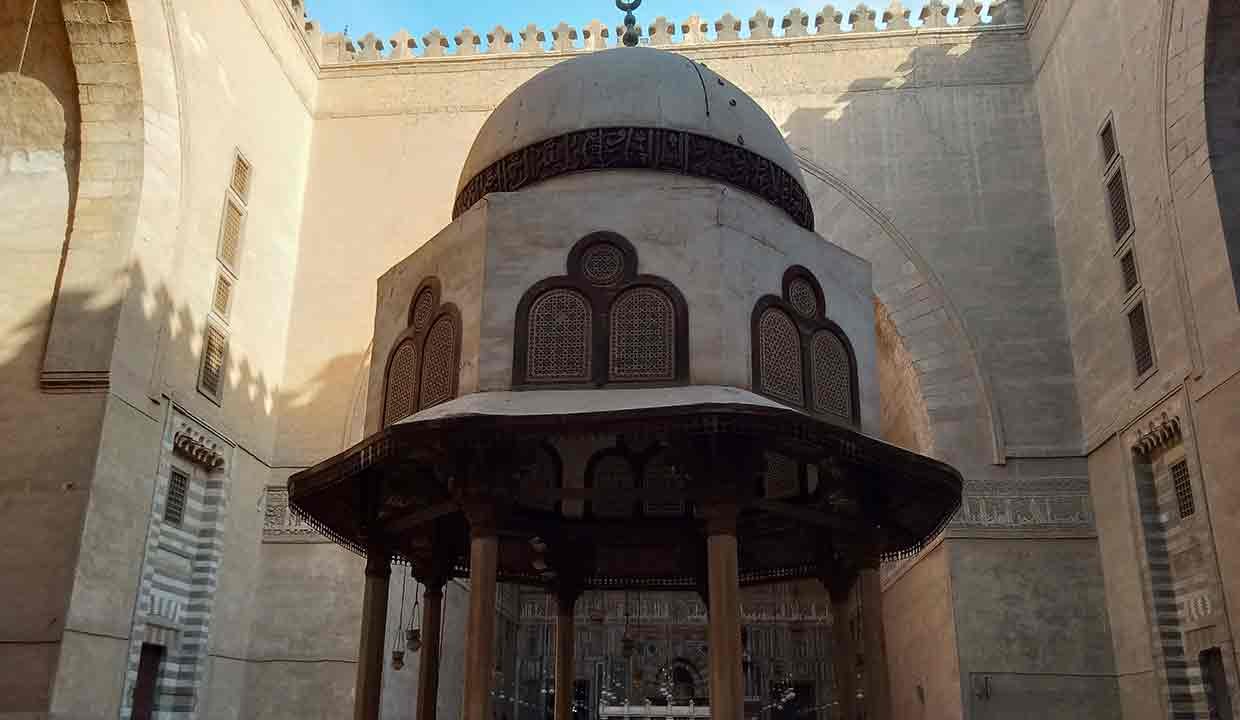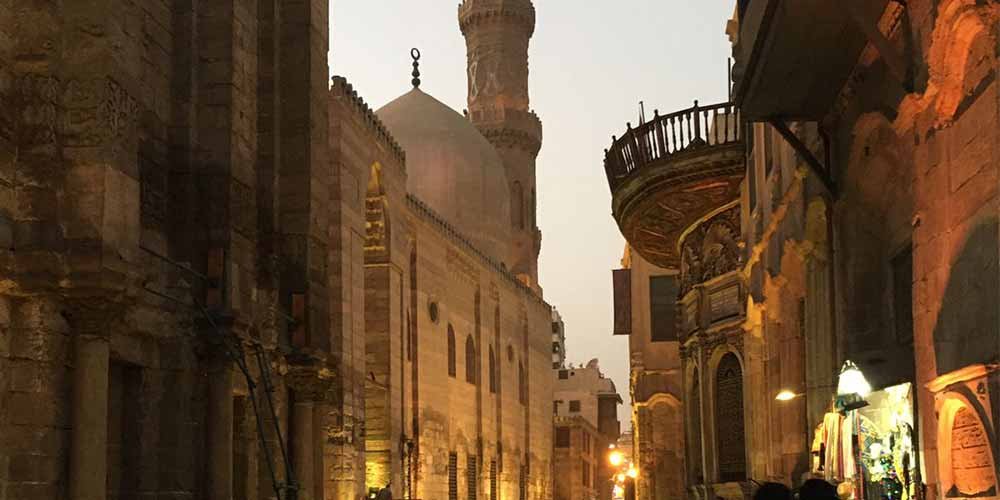Wonderful Cairo – Part Two
Explore Egypt Tours is pleased to present Cairo’s several destinations to show you some of these wonderful landmarks to enjoy and know more about it. This article is the 2nd one in a series of articles about tourist places that worth a visit in Cairo.
1) The Citadel of Saladin
This Citadel is one of the main attractive destinations. It can be considered as the most popular monument in Egypt that does not date back to the ancient Egyptian civilization.
Saladin El Ayouby built this citadel in 1176 to be a fortress for his soldiers against the attacks of Crusader armies. Saladin decided to build it on the Mokatam Hill because it is a high place and overlooks the whole Cairo city that gives preference to Saladin’s soldiers against any attack.
This citadel was used by many rulers throughout Egyptian history whether as a fortress or as the seat of the rule as Mohamed Ali did.

What can be visited in This Citadel?
It contains a lot of monuments which were built throughout history, just to name a few:
Suleiman Pasha Mosque: it is an example of the mosques’ Ottoman style in Egypt.
Al-Nasir Mosque: it was built by Sultan Al-Nasir Muhammed during the Mamluk period in the 14th century.
Mohamed Ali Mosque or the Alabaster Mosque

It is also named the Alabaster Mosque because its interior and exterior walls are coated with alabaster.
Mohamed Ali Mosque was built on the Turkish style. It was influenced by the blue mosque that belongs to Sultan Ahmed in Turkey, whereas the mosque is divided into two parts, the first part is the courtyard, while the second one is the house of prayer. This mosque distinguishes with its domes and minarets that take the pencil shape.
The National Military Museum: it displays the history of soldiers and weapons that were used throughout Egyptian history.
The view from the citadel is unparalleled where you can see several Cairo monuments from one place and enjoy taking unique photos. 
2) Mosque-Madrassa of Sultan Hassan
This mosque was built by Sultan Hassan in 1361. It is known with its huge architecture whereas its walls are 36 meters high and the tallest minaret is 68 meters.
It consists of an open courtyard that has a fountain and surrounded with four iwans (Arabic word means a rectangular hall that walled on three sides and one end is entirely open), each iwan has a door that leads to the students’ rooms and classrooms.
It is called Madrassa (Arabic word means School) because this place was for teaching the four doctrines of Islam.

3) Al Rifai Mosque or the Royal Mosque
What is the history of the Al Rifai Mosque?
It is located in front of Mosque-Madrassa of Sultan Hassan. It was built by Khushiar Hanim (the mother of Khedive Ismail) in 1869 AD. Its construction was finished in 1911. She dedicated this building to be a cemetery for the members of the Mohamed Ali family.

How does This Mosque look like?
This building consists of two parts; the first part is the praying house that characterized by its amazing decorations, while the second one is the royal cemetery that has the shrines of Khushiar Hanim, Khedive Ismail, Shah Iran, Ali Abu-Shebak, and Sheikh Yehia Al-Ansary.
4) Moez St.
What can be visited in El Moez Leh Deen Ellah Street?
This street is the most famous one in Egypt. It is worth visiting because it is full of historical buildings that date back to different Islamic periods such as Abbasid, Fatimid, Mamluk and Ottoman periods. These monuments are such as:
Mosques are such as Al-Aqmar (Its façade was imitated at the Coptic Museum), and Al-Hakim Mosque is one of the most fascinating mosques in Egypt.
The Sabils (Arabic word means fountains). They are such as the Sabil-Kuttab of Abdel-Rahman Katkhud and the Suleiman Aga El Selahdar Sabil. Visit it to see how people drank in old times.
Sultan Al Mansur Qalawun complex contains a mosque, a medersa, a mausoleum, and a mauristan.
Bayt Al-Suhaymi at al-Darb al-Asfar is a great example of Egyptian houses in Cairo during the 19th century.
Bab al Fotooh is an Arabic word means the conquest gate. It took this name because the soldiers were entering Cairo from this gate after they won in wars. Bab Al Nasr is an Arabic word means the victory gate. It took this name because the soldiers were going out for wars from it. Those gates are at the end of El Moez Leh Deen Ellah Street.
5) Khalili Bazaar
Khan-el Khalili Bazaar is one of the Egyptian destinations that are worth a visit. Do not miss it. It was built by Khan Khalili in the 14th century. It is a market presents several products such as spices, perfume, and clothes. It also contains several cafes such as Al Fishawy café or Naguib Mahfouz café. Visit it to take souvenirs from in Egypt to remember this unique tour.

6) Ibn Tulun Mosque
This Mosque was built by Ahmed Ibn Tulun during the Tulunid dynasty period in Egypt in 876 AD. It is considered the biggest mosque in Egypt because it was built on six acres and a half-acre.
How does this Mosque look like?
It consists of four riwaqs and an open courtyard that has a fountain. The unique in this mosque is its minaret that was influenced by the minaret of the Great Mosque of Samarra that takes the spiral shape. You will be able to climb this minaret and enjoy with amazing view for El-Sayeda Zainab neighborhood.

7) Gayer Anderson Museum or Bayt al-Kiritliya
What is the history of this Museum?
It is located beside Ibn Tulun Mosque. It consists of two houses that date back to the Ottoman period. These two houses were attached through a bridge. The museum also is called Bayt al-Kiritliya (Al-Kiritliya House) because the last owner of this house was a lady from Crete.
Who is Gayer Anderson?
Robert Gayer-Anderson was a doctor in the British army. He stayed in Egypt and took this building as his house in 1935. After Gayer-Anderson left Egypt, this house was changed to be a museum. This museum displays the Gayer Anderson’s collections such as the oil paintings, the artifacts collected by Gayer Anderson, and the medical tools that he used whereas he was working as a gynecologist and obstetrician.
What may make you are keen to visit this house is that it was used for taking shots for The Spy Who Loved Me movie of the James Bond film.

8) Museum of Islamic Art in Cairo
Museum of Islamic Art is the largest museum in the whole world that displays Islamic Art collections. It holds about a hundred thousand objects that came from different countries such as India, China, and North Africa to Andalusia.
What is the history of this Museum?
In the beginning, the museum was called the Arab Museum and was located in Al-Hakim Mosque, but the current building was built in Bab Al-Khalq in Port Said Street in El Sayeda Zeinab neighborhood in 1903.
What can be seen in Museum of Islamic Art?
It displays unique artifacts such as ceramics, textiles, lamps, and metal works. These collections are spanning from the beginning of Islam to the end of Muhammad Ali’s family.

Enjoy these amazing monuments in Cairo with Explore Egypt Tours by submitting on Cairo Day Tours.
Explore Egypt Tours Tripadvisor



Comment (0)